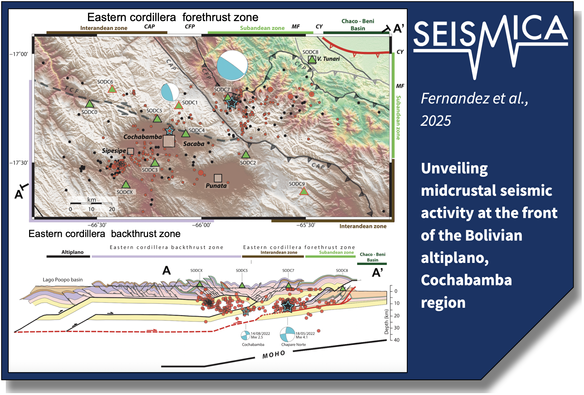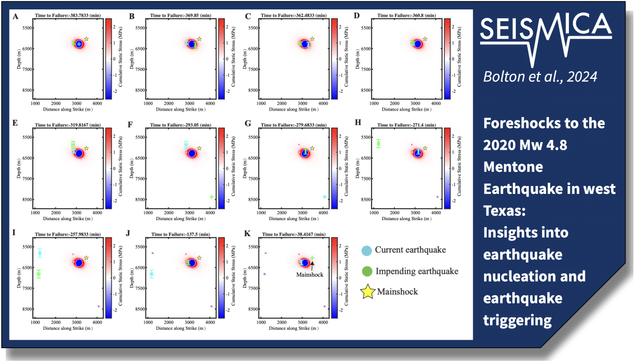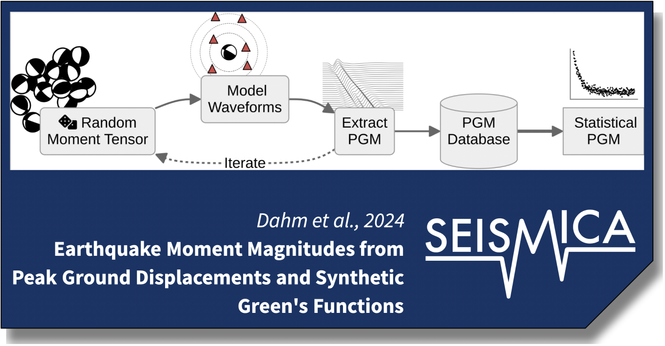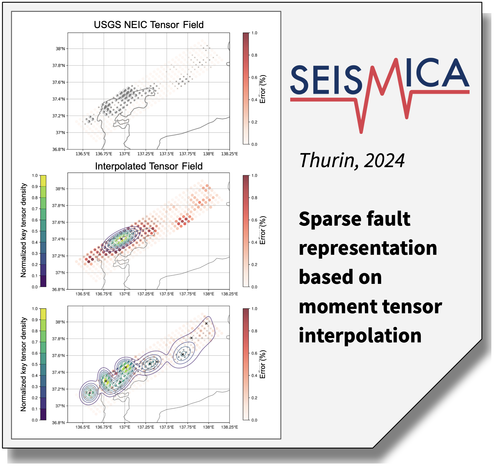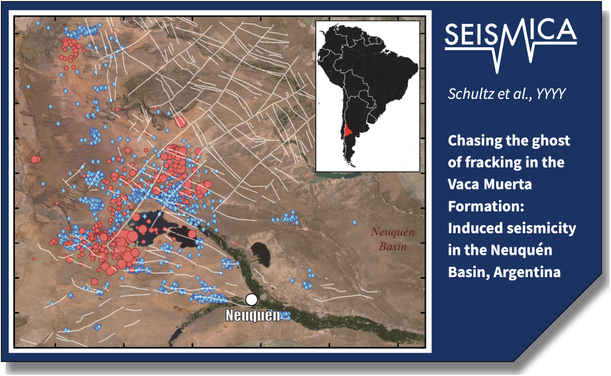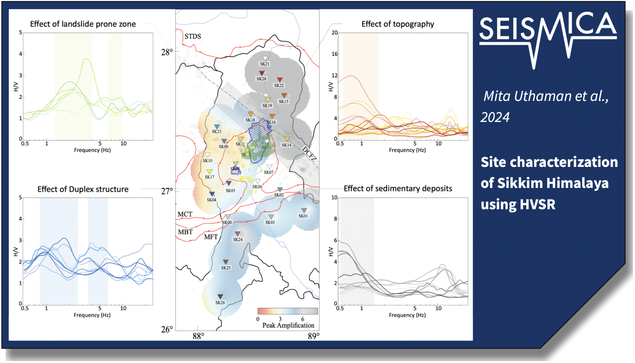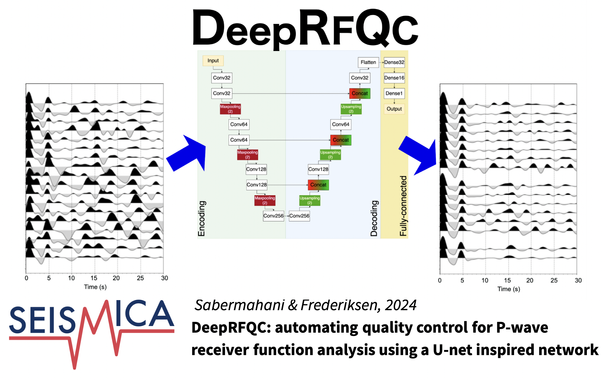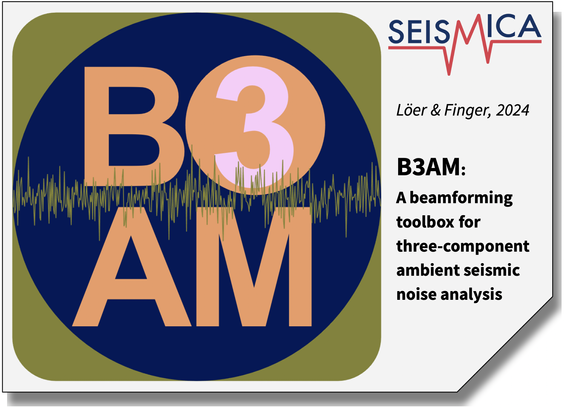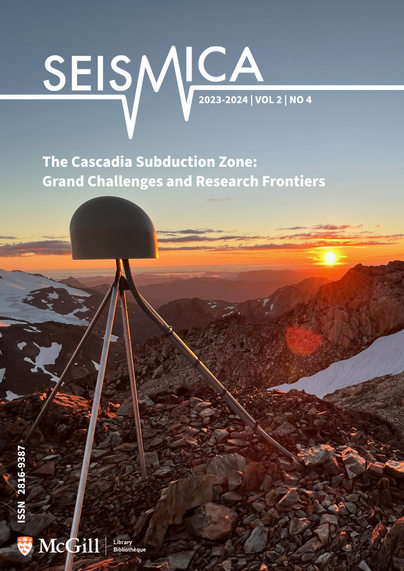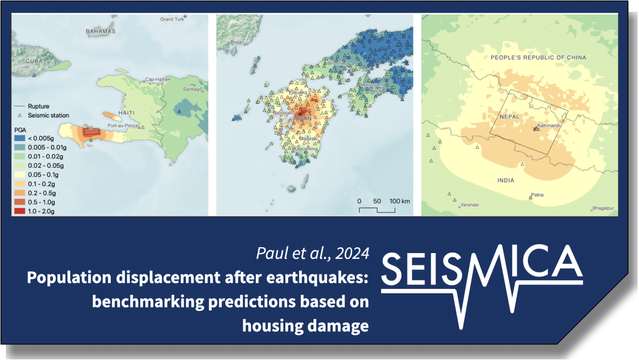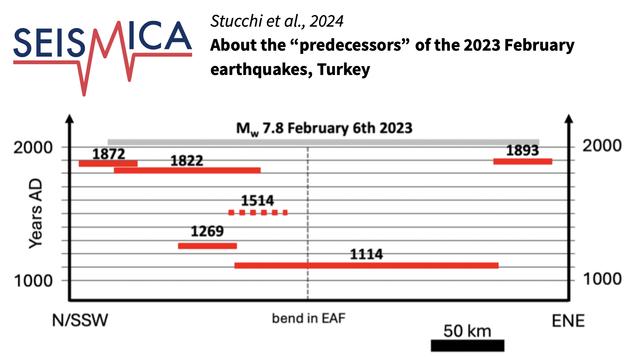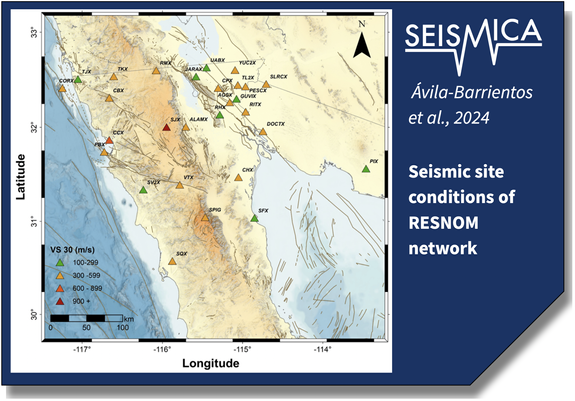Discover how fault geometry shaped the 2024 Noto earthquake's impact, paving the way for improved seismic hazard assessments. #EarthquakeScience #SeismicResearch #DisasterPreparedness
#EarthquakeScience
Mid-crustal depth earthquakes in Cochabamba-Bolivia?
Yes, Fernandez et al. provide valuable insights into these earthquakes and show how they are concentrated in the main thrust fault shear zone.
Read now: https://doi.org/10.26443/seismica.v4i1.1380
#Bolivia #Seismology #EarthquakeScience #peerreviewed #DiamondOpenAccess #Earthquake #OpenAccess #OpenScience
Bolton et al. show that static stresses induced from a nearby ML 4.0 foreshock significantly perturbed the local stress state and could have triggered the 2020 Mentone Mw 4.8 earthquake in West Texas.
https://doi.org/10.26443/seismica.v3i2.1420
#Texas #mentone #Seismology #EarthquakeScience #peerreviewed #DiamondOpenAccess #Earthquake #OpenAccess #OpenScience
What are reliable earthquake magnitudes?
Dahm et al.'s method uses synthetic seismogram peak-values to calculate moment magnitudes of microearthquakes—essential for studying shallow, human-induced seismicity:
https://doi.org/10.26443/seismica.v3i2.1205
#Seismology #EarthquakeScience #peerreviewed #DiamondOpenAccess #Earthquake #OpenAccess #OpenScience
Finite-fault rupture models, without the finite-fault?
Thurin demonstrates it is possible to simplify the classical representation for large earthquakes using moment tensor interpolation.
https://seismica.library.mcgill.ca/article/view/1433
#moment-tensor #finitefault #Seismology #EarthquakeScience #peerreviewed #DiamondOpenAccess #Earthquake #OpenAccess #OpenScience
Schultz et al. find that earthquakes up to magnitude 4 have been induced by hydraulic fracturing operations in the Neuquén Basin, Argentina.
Learn more here: https://doi.org/10.26443/seismica.v3i2.1435
#inducedearthquakes #Argentina #Seismology #EarthquakeScience #peerreviewed #DiamondOpenAccess #Earthquake #OpenAccess #OpenScience
After more than two years of monitoring the resonance frequency of a rock tower in Utah, Moore et al. show that frequencies drift with daily and annual insolation patterns, which is key for understanding and identifying changes caused by rock damage.
https://doi.org/10.26443/seismica.v3i2.1375
#Utah #rock #Seismology #EarthquakeScience #peerreviewed #DiamondOpenAccess #Earthquake #OpenAccess #OpenScience
Mita Uthaman et al. examine the northeastern Indian state of Sikkim, which spans approximately 200 km in the Himalayas, and find that it exhibits highly varied site characteristics, indicating significant seismic risk potential.
https://doi.org/10.26443/seismica.v3i2.1282
#Seismicrisk #hazard #himalaya #Seismology #EarthquakeScience #peerreviewed #DiamondOpenAccess #Earthquake #OpenAccess #OpenScience
Sabermahani and Frederiksen developed a new model for quality control in receiver function analysis, designed to identify high-quality signals and ensure that only the most reliable data is preserved for accurate seismic interpretation.
https://doi.org/10.26443/seismica.v3i2.1341
#Seismology #Geophysics #DataScience #Research
#EarthquakeScience #peerreviewed #DiamondOpenAccess #Earthquake #OpenAccess #OpenScience
Exciting updates at Seismica!
We've refreshed our journal policies to improve transparency, ethics, and efficiency.
Check out changes to data requirements, expanded scope, and more—now easier to find.
Learn more: https://seismica.library.mcgill.ca/policies
#policies #scientificjournal #peerreviewed #openaccess #openscience #Seismology #EarthquakeScience
B3AM me up!
Löer & Finger developed an open-source code package in MATLAB and Python to perform three-component beamforming of seismic noise for dispersion analysis, wavefield composition, noise source distribution, and more:
https://seismica.library.mcgill.ca/article/view/1343
#python #matlab #seismicnoise #noise #Seismology #EarthquakeScience #peerreviewed #DiamondOpenAccess #Earthquake #OpenAccess #OpenScience
Here’s a great opportunity to publish your research on the Cascadia Subduction Zone alongside other experts in this special issue.
Submissions are still open. Explore topics and details here:
https://seismica.library.mcgill.ca/announcement/view/17
#cascadia #subduction #earthquake #Seismology #EarthquakeScience #openaccess #diamondopenaccess #scientificjournal #geosciences #openscience
Harrington et al. found that passing seismic waves from distant earthquakes can trigger earthquakes in localized areas in northern Chile with stresses comparable to earth tidal loading.
https://doi.org/10.26443/seismica.v3i2.1384
#Chile #triggering #Seismology #EarthquakeScience #peerreviewed #DiamondOpenAccess #Earthquake #OpenAccess #OpenScience
Using 30 years of observations of the Gofar oceanic transform fault at the East Pacific Rise, Wei et al. bring us a model that simulates the best-observed earthquake cycles on Earth:
https://seismica.library.mcgill.ca/article/view/1382
#fault #eastpacificrise #Seismology #EarthquakeScience #peerreviewed #DiamondOpenAccess #Earthquake #OpenAccess #OpenScience
Can we predict housing damage and population displacement after earthquakes?
Paul et al. benchmark risk models against reported impacts and data-driven estimates in Haiti, Japan, and Nepal.
https://seismica.library.mcgill.ca/article/view/1374
#Haiti #Japan #Nepal #Seismology #EarthquakeScience #peerreviewed #DiamondOpenAccess #Earthquake #OpenAccess #OpenScience
Our in-house experts bring subject knowledge and detail, catching errors beyond typos. They ensure scientific details are accurate.
Frustrated with big publishers' copyediting? You’ll love working one-on-one to get your paper publication-ready at Seismica.
https://seismica.library.mcgill.ca/about/editorialTeam
#copyediting #scientificjournal #OpenAccess #DiamondOpenAccess #peerreviewed #Seismology #EarthquakeScience
Were there any predecessors of the 2023 Turkish-Syrian earthquake?
Stucchi et al. address this question to contribute to the discussion on the earthquake potential of the Eastern Anatolian Fault.
https://doi.org/10.26443/seismica.v2i3.1312
#Anatolianfault #turkey #turkiye #2023 #Seismology #EarthquakeScience #peerreviewed #DiamondOpenAccess #Earthquake #OpenAccess #OpenScience
Using seismic noise and Horizontal-to-Vertical Spectral Ratios, Ávila-Barrientos et al. find a great dispersion of VS30 results in Baja California, Mexico, consistent with the heterogeneities between The Mexicali Valley and the Peninsular Ranges:
https://seismica.library.mcgill.ca/article/view/1151
#mexico #bajacalifornia #seismichazard #Seismology #EarthquakeScience #peerreviewed #DiamondOpenAccess #Earthquake #OpenAccess #OpenScience
A big shout out to our amazing copy-editors who weave their magic into the wonderful manuscripts we receive.
They fix every typo and verify every reference, making the papers sparkle, which is fitting for a Diamond open access publication!
https://seismica.library.mcgill.ca/about/editorialTeam
#copyediting #peerreviewed #scientificjournal #DiamondOpenAccess #OpenAccess #seismology #EarthquakeScience
Low-frequency earthquakes may occur more often than we previously thought. Through deep learning, hidden seismic activity is now being revealed:
https://doi.org/10.26443/seismica.v2i4.1134
#cascadia #Vancouver #lowfrequencyearthquakes #deeplearning #Seismology #EarthquakeScience #peerreviewed #DiamondOpenAccess #Earthquake #OpenAccess #OpenScience
